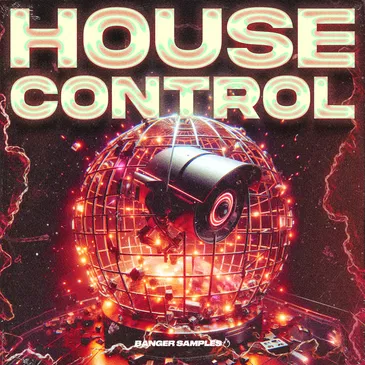
P2P | 31 October 2024 | 7.86 GB
沃尔特豪森的特罗斯特管风琴,有47个止音和6个传输,是图林根州最大的巴洛克式管风琴。它在很大程度上保留了1730年的原始状态(70%的管材是由特罗斯特制造的),因此,在演奏巴赫及其同时代人的管风琴音乐时,它是一个无价的参考。今天,这个管风琴被认为是一个重要的正宗的“巴赫管风琴”。
该管风琴由托比亚斯·海因里希·戈特弗里德·特罗斯特于1724-30年建造,但由于几次规格变更以及特罗斯特与沃尔特豪森教区之间的严重冲突,直到1755年左右才完工,可能是由管风琴建造者约翰·海因里希·鲁珀特建造的。这种乐器在没有重大变化的情况下幸存下来,并在1994-98年间由Orgelbau Waltershausen带回了1730年的状态。
它是图林根管风琴制作学派的典型乐器,有Violonbass,混合三音,Sesquialtera和Viola di Gamba等级别。这一点,以及良好的混合停止允许无尽的声音组合的丰富性,已经以一种迷人的方式预测了一个世纪后的浪漫风琴。
Trost的杰出和创新的概念使用非常规和极端的管道测量,如Geigenprincipal, Flauto traverse, Vagarr,但同样具有巴赫喜欢的精致甜味的止音,如Flauto dolce, Flöte dupla和Nachthorn等,也支持即将到来的华丽风格。巴赫所要求的坚定的底音(德语“Gravität”)是通过三个16英尺的手动音阶来实现的,踏板上有一个16英尺和32英尺的Posaune,三个手动音阶中不少于12个8英尺的音阶,丰富的混合以及两个Sesquialtera音阶。该乐器有一个非常丰富的全会声,而从不强迫的声音。
由魏玛安娜-阿玛利亚图书馆的建筑师约翰·埃伯哈德·斯特拉斯堡设计的风琴立面和控制台具有无与伦比的美感。甚至说明书都是原装的。
虽然我们不确定,但巴赫很可能演奏过这个管风琴。我们知道,他在1739年参观阿尔滕堡的特罗斯特管风琴时,表达了对特罗斯特管风琴的优美音色和精湛工艺的最高赞赏。
这座教堂的建筑显然是德累斯顿圣母教堂的前身,由Plobsheim的Wolf Christoph Zorn设计。这种集祭坛、讲坛、风琴于一体的特殊建筑,完美地实现了路德宗的礼仪理念。因此,管风琴位于祭坛上方(也发现在德累斯顿圣母教堂)。
教堂房间采用半干燥声学,混响时间约为2.5秒。
The Trost organ of Waltershausen, with its 47 stops and 6 transmissions, is the biggest baroque organ in Thuringia. It is largely preserved in its original state of 1730 (a good 70% of the pipe material was built by Trost) and therefore is an invaluable reference when performing organ music by J. S. Bach and his contemporaries. Today this organ is viewed as an important authentic “Bach organ”.
The organ was built in 1724–30 by Tobias Heinrich Gottfried Trost, but due to several specification changes and severe conflicts between Trost and the Waltershausen parish, it was not completed until around 1755, probably by the organ builder Johann Heinrich Ruppert. The instrument has survived without major changes, and was brought back to its 1730 state by Orgelbau Waltershausen during the years 1994–98.
It is a typical instrument of the Thuringian organ building school with ranks such as a Violonbass, mixtures containing thirds, Sesquialtera, and Viola di Gamba, etc. This, and the richness of well-blending stops allowing endless sound combinations, already anticipates the romantic organ of a century later in a fascinating way.
Trost’s outstanding and innovative concepts using unconventional and extreme pipe measurements in stops like the Geigenprincipal, Flauto traverse, Vagarr, but likewise stops with a delicate sweetness preferred by Bach, such as the Flauto dolce, Flöte dupla and Nachthorn etc., also support the upcoming gallant style. The firm ground tone (German “Gravität”) demanded by Bach is realized by three 16 foot manual ranks, a 16 and 32 foot Posaune in the Pedal, no less than 12 eight foot flue stops in the three manual divisions, rich mixtures as well as two Sesquialtera stops. The instrument has an extremely rich plenum sound, while never forcing the sound.
The organ facade, designed by Johann Eberhard Strassburger, the architect of the Anna-Amalia library of Weimar, and the console are of unrivalled beauty. Even the manuals are original.
Although we don’t know for sure, it is likely that Bach played this organ. We do know that he expressed his highest appreciation for the beautiful sound and good craftsmanship of Trost’s organs while visiting the Trost organ of Altenburg in 1739.
The church architecture, which apparently was a predecessor of the Dresden Frauenkirche, was designed by Wolf Christoph Zorn of Plobsheim. This special architecture, uniting altar, pulpit and organ, perfectly realizes the Lutheran liturgical idea. Therefore the organ is located above the altar (also found in the Frauenkirche Dresden).
The church room has semi-dry acoustics with about 2.5 seconds of reverberation.






